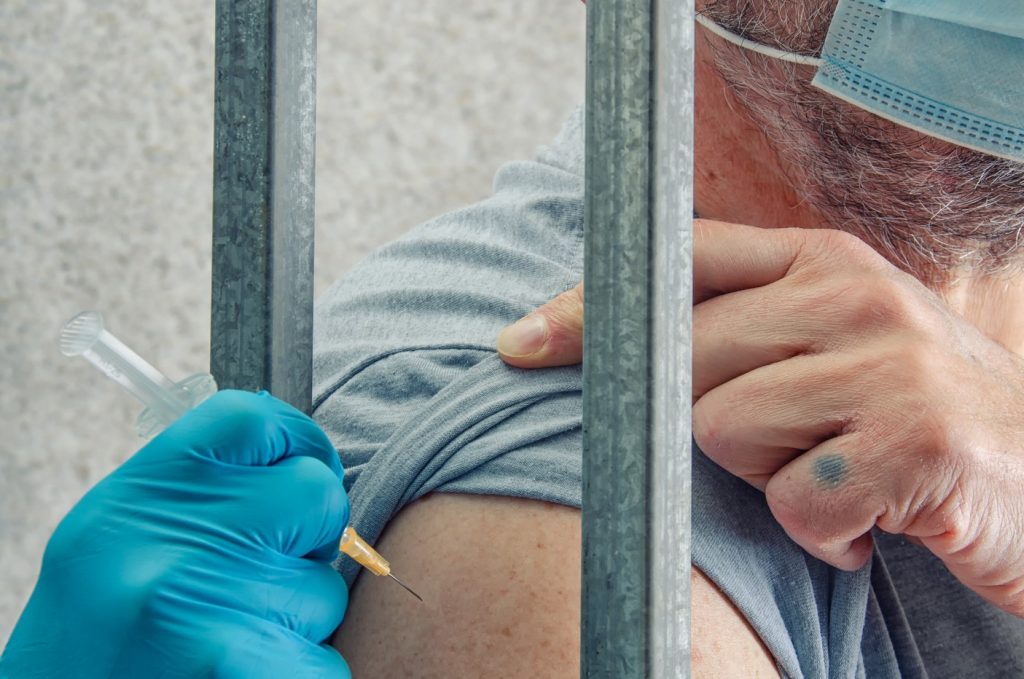
04 Mar Mortality Rates in American Jails and Prisons Are on the Rise
Last year, an investigation by Reuters highlighted startling statistics about morality rates in American prisons and jails. It found that across the country, death rates inside jails are rising. Recent reporting on the mortality rates in Oklahoma illustrates the problem. Within Oklahoma’s 11 largest county jails, 148 people died from 2009 through 2019. That amounts to a mortality rate of 2.16 deaths for every 1,000 prisoners. By comparison, the national average is 1.46 deaths per 1,000 prisoners.

One jail, in particular, stands out from even the rest of the Oklahoma jails in question. The Oklahoma County Detention Center reported 4.77 deaths per 1,000 of those incarcerated. Earlier this year, six prisoners died within a span of seven weeks. Alarmingly, Oklahoma does not even have the highest death rate in the country. That dubious honor belongs to West Virginia at 2.23 deaths per 1,000.
However, these systems are not extreme outliers among American mass incarceration prison system. While the death rates in these states are indeed higher than the national average, the same problems persist throughout the country.
The problems in Oklahoma are a microcosm of mortality rates that plague American prisons and jails around the country.
In 2017, the Priority Criminal Justice Needs Initiative formed a panel made up of researchers, health care professionals and corrections administrators. This panel gave several reasons for high mortality rates in American prisons and jails.
- Aging prison populations. The elderly prison population in America has risen by more than 300% since 1999. More prisoners are dying of diseases of old age than ever before.
- Slow response time. The panel asserted that slow response time was the leading factor in preventable deaths. A particularly crystalline example of this happened in 2015 in Oklahoma, when Terral Ellis Jr. begged for help from jail guards before dying of sepsis and pneumonia.
- Lack of oversight. The inability of governing bodies to effectively regulate jails and prisons was another focus of the study. Agencies at all levels have proven to be difficult when it comes to releasing reliable statistics and information. But nowhere is this more pronounced than in private prisons contracted by the government. The Private Prison Information Act, which would have subjected these facilities, Freedom of Information Act, died in committee shortly after being introduced.
- Lack of mental health resources. Between 2001 and 2016, suicide was the fourth leading cause of death in state and federal prisons. The panel attributes this in part to a lack of mental health resources inside and outside of correctional facilities.
- Geographic location. With many facilities located in rural areas, distance to medical centers outside those in facilities themselves also plays a role, according to the panel. The cost of transporting infirmed prisonerss and travel times alone provide serious hurdles to properly treating those in need of care.
The statistics around mortality rates in American prisons and jails are even more shocking than you think.
The Reuters investigation is one of the most complete assessments we have to date when it comes to the mortality rates in American prisons and jails. Some of the biggest takeaways came in the form of some particularly horrifying statistics.
Some of its findings include the following:
- From 2009 to 2019, jail mortality overall rose 35%.
- 62% of jails in the study had privatized their medical services. Mortality rates in those jails was 18%-58% higher than those using public health agencies.
- Nearly a quarter of deaths in the survey were due to suicide.
- At least 66% of the prisoners who died were awaiting trial and had not been sentenced yet.
- Nearly 300 of the prisoners who died spent at least a year in jail awaiting trial before passing away.
COVID-19 may have exacerbated these problems, but it is also causing a rethinking of policy.
Jail and prison mortality made headlines last year as COVID-19 ripped through the country’s correctional facilities. While the disease was new, some of the same issues that have contributed to high death rates prior to the arrival of the disease made the spread far worse. Lack of adequate healthcare resources, slow response times and a lack of agency accountability in the transfer and management of prisoners all contributed to disproportionate death rates.
However, the spread of the disease forced correctional systems across the country to change their approach. The same Reuters study found that the correctional population dropped by 170,000 last year. Jail and prison systems across the country accomplished a reduction in prisoners through a variety of means.

For example, the state of California reduced bail for most misdemeanors and low-level felonies to $0. By the end of May, Sacramento County and Los Angeles counties reported a more-than 30% decrease in their jail populations. The jail population in Orange County fell by nearly 45% during that same period.
Other efforts have been more collaborative. Judges ordered 384 people to be released from Wayne County jail and 150 people from Oakland County jail. The chief judge of a county circuit court ordered at least 200 counts of administrative release. Meanwhile, law enforcement agencies arrested fewer people during that same time.
Could last year’s reduction of prisoners provide a roadmap to reduce the mortality rate?
If there are fewer people in jails and prisons, fewer people will die in jail and prisons. Some of that is simply mathematical in that with fewer people, there are fewer people that could potentially die. But it is also about the allocation of resources and attention.
In broad terms, the Priority Criminal Justice Needs Initiative panel paints a picture of a justice system that is too overwhelmed to have any chance at being compassionate. Fewer people in jails and prisons around the country means that there are more resources for those that remain inside.
We still do not know the effect of releasing people from correctional facilities en masse. Future studies will tell us whether or not there is any correlation between the release of 170,000 people and crime rates. What we do know is that counties, states, and even the federal government are capable of changing or bending the rules to release people from incarceration when the situation demands it. Perhaps this could set a precedent for future actions in which we decide whether or not hundreds of preventable deaths of people in custody each year warrant similarly critical looks at policy. At a minimum, it is clear that the mortality rate in American prisons and jails is on the rise. And we need to do something about it.

